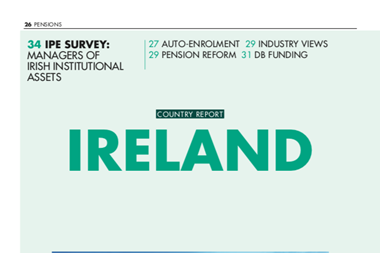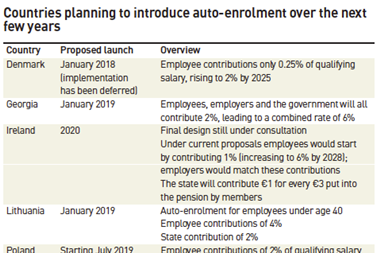Auto-enrolment has increased the number of pension savers in the UK but most are paying too little into their pots, according to industry experts.
Data from the Office for National Statistics (ONS) released today revealed that total UK pension scheme membership hit 45.6m in 2018, an increase of nearly 11% year on year.
Those saving into private sector defined contribution (DC) schemes had an average annual contribution level of 5.1% of salary, incorporating both employer and employee payments, the ONS reported. Defined benefit (DB) scheme members received contributions totalling more than 25% on average.
Helen Morrissey, pension specialist at Royal London, said: “If this disparity is not addressed, we risk a lost generation of people who missed out on final salary pensions but are simply not putting enough into their new-style pension.
“Automatic enrolment was a great start, but this is simply the end of the beginning. Rather than government and industry pat itself on the back for a job well done, the drive to increase contributions to realistic levels needs to move forward in earnest.”
Employers sponsoring final salary DB schemes contributed 19.2% of salary on average, with members paying 6.4%, the ONS’ data showed. DB schemes based on career average salary benefits recorded higher member contributions (7.9%) and lower employer payments (17.7%).
Members of DC schemes paid 2.7% of salary on average, while employers contributed just 2.4%. Before auto-enrolment was introduced, average DC contributions totalled 11% of salary on average, according to consultancy firm Buck.
‘Raise contributions to boost outcomes’
Minimum contributions for auto-enrolment schemes rose to 8% (5% from the member, 3% from the employer) from 6 April this year. DC experts advocated further increases to at least 12% of salary, however.
Michael Ambery, senior DC consultant at Hymans Robertson, said that, despite this latest increase, “many people will be massively under-saving for a comfortable retirement”.
Planned changes to auto-enrolment rules – including reducing the minimum age and salary thresholds to bring more people into the system – would help, Ambery said, but more work was required.
“At 12% [of salary] we would begin to see a contribution that will have a meaningful impact for employees’ retirement savings,” he said. “At that level we can see far greater certainty of them reaching a target income that they can live on in retirement.”
Malcolm McLean, senior consultant at Barnett Waddingham, highlighted that some industry commentators had warned of contributions falling towards the legal minimum when auto-enrolment was first introduced.
“This can probably be best addressed by an increase in the minimum contribution levels to say 12%, instead of 8%, at a relatively early stage in the future,” he said.
Buck’s head of DC wealth Mark Pemberthy added: “While it is great that more people are saving for their future, most employees are still not saving enough to provide the standard of living they want or expect in retirement and this is storing up future problems for employees and employers alike.”
He cited Buck research that found that 44% of employers were concerned about the long-term consequences if employees could not afford to retire. “However, they need to go further than the government’s minimum requirements if they want to help employees secure a comfortable retirement,” Pemberthy said.











No comments yet